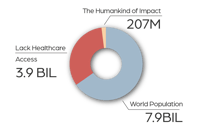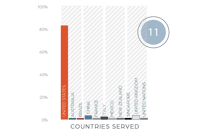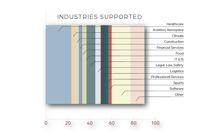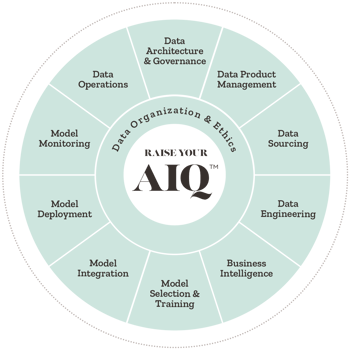BETTER Customer Review Sentiment Analysis: A Business Case for N-grams
Sentiment analysis is a useful tool for organizations aiming to understand customer preferences, gauge public...
for the health of people

for the health of planet

for the health of business

|
FOR THE HEALTH OF PEOPLE: EQUITY
|
 |
|
“The work [with Synaptiq] is unprecedented in its scale and potential impact,” Mortenson Center’s Managing Director Laura MacDonald MacDonald said. “It ties together our center’s strengths in impact evaluation and sensor deployment to generate evidence that informs development tools, policy, and practice.”
|
| Read the Case Study ⇢ |
|
DATA STRATEGY
|
 |
|
A startup in digital health trained a risk model to open up a robust, precise, and scalable processing pipeline so providers could move faster, and patients could move with confidence after spinal surgery.
|
| Read the Case Study ⇢ |
|
PREDICTIVE ANALYTICS
|
 |
|
Thwart errors, relieve in-take form exhaustion, and build a more accurate data picture for patients in chronic pain? Those who prefer the natural albeit comprehensive path to health and wellness said: sign me up.
|
| Read the Case Study ⇢ |
|
MACHINE VISION
|
 |
|
Using a dynamic machine vision solution for detecting plaques in the carotid artery and providing care teams with rapid answers, saves lives with early disease detection and monitoring.
|
| Read the Case Study ⇢ |
|
INTELLIGENT AUTOMATION
|
-1.jpg?width=296&height=196&name=man-wong-aSERflF331A-unsplash%20(1)-1.jpg) |
|
This global law firm needed to be fast, adaptive, and provide unrivaled client service under pressure, intelligent automation did just that plus it made time for what matters most: meaningful human interactions.
|
| Read the Case Study ⇢ |
 |
|
Mushrooms, Goats, and Machine Learning: What do they all have in common? You may never know unless you get started exploring the fundamentals of Machine Learning with Dr. Tim Oates, Synaptiq's Chief Data Scientist. You can read and visualize his new book in Python, tinker with inputs, and practice machine learning techniques for free. |
| Start Chapter 1 Now ⇢ |


We channeled our expertise into AIQ: an innovative framework for AI-ready data strategy and AI implementation, focusing on 11 critical capabilities proven to effectively enhance workflow integration and return on investment.
In this blog post, we'll explore in detail one of these 11 capabilities: Data Sourcing. For a broader understanding of AIQ, refer to our blog post titled "AIQ: What We Mean & What You Stand to Gain."
Data Sourcing is the mechanism by which an organization identifies, extracts, and integrates data.
Today, data powers many of the digital applications that we take for granted, from search engines to social media. Data also powers many processes used in industry — from marketing to manufacturing. Any organization reliant upon data that can't be collected internally must define and execute a strategy to acquire it from external sources.
The first step is to define a data asset strategy (DAS). DAS allows an organization to manage and develop its data as a business asset. It uses data to enhance decision-making, product development, and other business-orientated processes and applications. The second step is to implement data discovery (DD): the process of finding valuable open-source, public, or third-party data or metadata (labeling) services.
Once an organization has DAS and DD, it must collect data to continue increasing its data asset value. For third-party data, oftentimes, this means acquiring data through licensing, partnerships, and procurement — a task for “data hunters.” Data hunters identify and negotiate with potential data partners: third parties willing to provide data. They determine which data partners have the most valuable data and negotiate its acquisition.
An organization must know its objectives, what data it needs to advance those objectives, and with whom it's willing to partner to procure third-party data. Data hunters cannot work effectively without this information.
Ultimately, Data Sourcing done right is a well-oiled machine for seeking and acquiring data. An organization should constantly evolve its DAS, update its DD practices to reflect that evolution, and use data hunters to partner (or renegotiate partnerships) to acquire the best data for its dynamic objectives.
In recent decades, we’ve watched data-powered applications and processes transform the way we work and data-first businesses disrupt entire industries. Organizations have a vested interest in Data Sourcing: the mechanism that determines the strategy to wield a data asset, extract insights from it, and increase its value through the integration of external data. Those that lack this capability will ultimately be out-competed.
You can learn about Data Sourcing and how it fits into AIQ by reading our blog. Or, take our AIQ assessment to determine where your organization stands for each of the 11 capabilities.

Synaptiq is an AI and data science consultancy based in Portland, Oregon. We collaborate with our clients to develop human-centered products and solutions. We uphold a strong commitment to ethics and innovation.
Contact us if you have a problem to solve, a process to refine, or a question to ask.
You can learn more about our story through our past projects, blog, or podcast.
Sentiment analysis is a useful tool for organizations aiming to understand customer preferences, gauge public...
February 28, 2024
In the ever-evolving landscape of technology, innovation and experimentation are key drivers of success. However, the...
February 23, 2024
Sentiment analysis is a must-have for organizations with a business-to-consumer (B2C) business model. This natural...
February 15, 2024